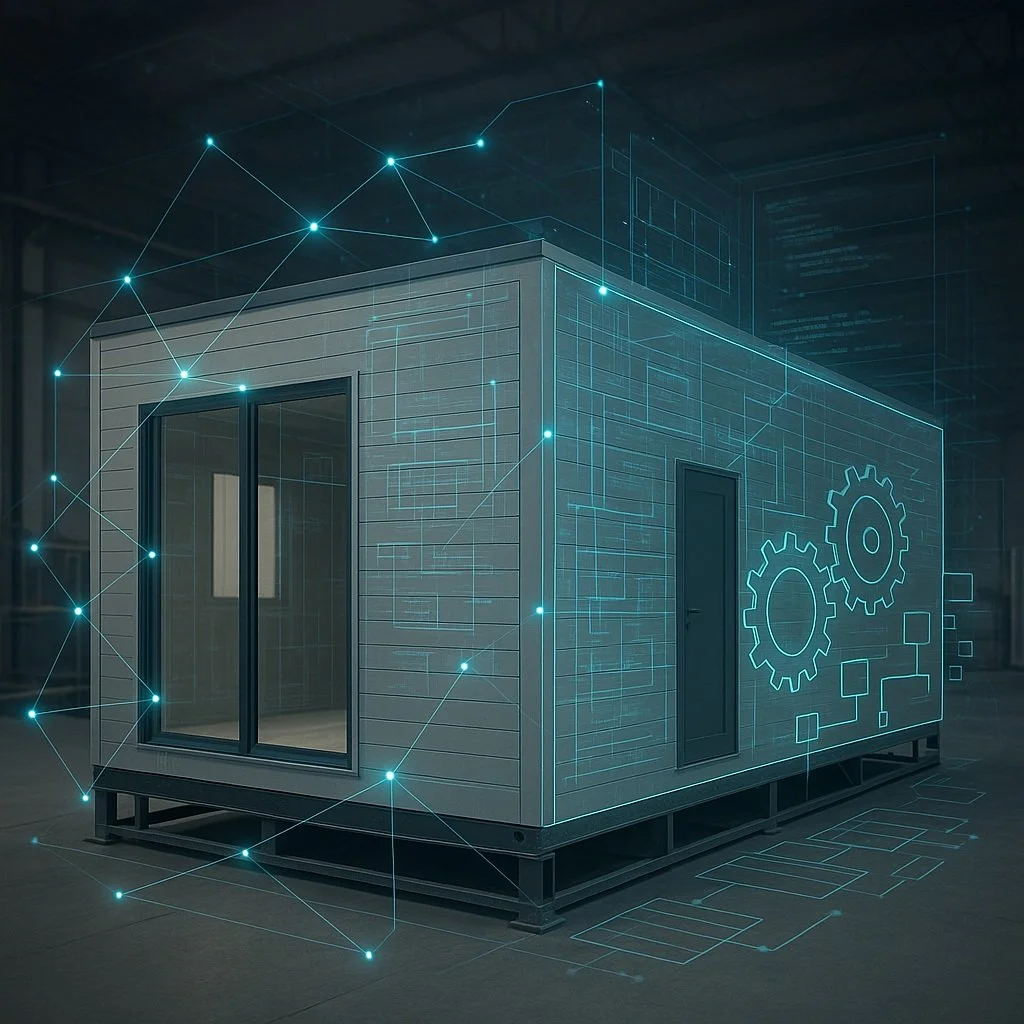Steel Logic: How Prefab Teaches Us to Design Better Systems
On a quiet site, the ground lies still. Foundations and utilities are laid, but the real work is happening elsewhere—in a factory. There, light gauge steel is being roll formed, punched, notched, and assembled—walls, joists, floor decks—each component waiting for its moment to travel down the line, slot into place, and form something whole.
By the time the soil thaws, a skeleton of steel will arrive—ready to be joined, aligned, and sealed. The hard part—precision cuts, alignment, quality checks—was already done under controlled conditions.
No delays, no rework, no surprises. Just clean joins and predictable outcomes.
That is the promise of light gauge steel within prefab and modular construction.
But beneath the steel and mechanics lies an architecture of systems, intention, and possibility.
Why Light Gauge Steel Matters Now
First, the real-world momentum:
LGS framing (aka cold-formed steel) is increasingly adopted in modular and prefab systems because it combines high strength with lower weight and precision fabrication.
In modular housing, LGS enables panels and modules that are lighter (easier to transport), more dimensionally stable (no warping, less moisture sensitivity), and more consistent (factory control over tolerances).
Innovations are showing up: advanced roll-forming machines, tighter integration with BIM and CNC workflows, and hybrid systems (steel + other materials) for customization and disassembly.
Steel is also recyclable, doesn’t suffer from pests or rot, and when detailed properly can manage fire, thermal bridging, and acoustic performance in contemporary codes.
LGS isn’t just a building material—it’s a structural metaphor for systems that are light, strong, repeatable, and resilient.
Structure Before Stress—Now with Steel Logic
One of the virtues of LGS prefab is that much of the variability is moved away from the site. In the factory, steel profiles are roll-formed, checked, holes pre-punched, connections inspected. Once they reach the site, they arrive as parts that fit precisely.
Light gauge steel systems don’t tolerate “sloppy.” They demand precision. But that demand is compassionate: it reduces surprises, rework, failure. In life systems, the analog is disciplines, routines, and feedback loops that enforce consistency without choking possibility.
This is precisely the logic we want in all systems—including the human ones: to shift the friction, unpredictability, and decision load away from the moment of action. We do this by embedding them in safer zones—rituals, frameworks, and deep preparation.
When the "parts" of our lives are prepared and precise, we step onto the "site" of action not to reconstruct from zero, but to respond, adapt, and connect.
The best prefab plants run the same way: they design for flow. Stations are arranged to reduce cognitive load, minimize waste, and make success predictable. That’s not rigidity—it’s intentional design that lets people focus on the work that matters most. This factory floor logic frees up human creativity and attention, reserving it for complex problem-solving instead of rote correction.
Predictability as an Act of Compassion
Steel’s dimensional stability is one of its gifts: it doesn’t bend or warp under shifting humidity or loads the way wood might. That consistency equals trust.
In human systems, each predictable handoff, checkpoint, or routine is a little anchor. In stress, the anchors help you stay upright. In flow, they disappear—but they’re doing the holding work.
Because just like LGS, our lives require joints, tolerances, and flexibility. Even in steel, connectors have tolerances. Design expects some adjustment at the edges. That’s the balance: firm skeleton, gentle flexibility.
Scaling with Integrity Through Steel Metaphor
One of the illusions is that “scale” requires dilution. But with steel-based modular systems, scale emerges because the process is robust. Each module or panel is clean, consistent, testable. The variation is in how they assemble—not in quality.
In LGS modular research, hybrid strategies now explore design for disassembly and flexibility (allowing steel frames to be reconfigured or reused).
In human or organizational systems, that suggests: build for adaptation, not just growth. Don’t define every outcome; define the rules of joining, iteration, reconfiguration.
The Invisible Architecture of Trust—Steel Edition
Steel systems gain legitimacy through inspection, tolerance checks, certifications—those hidden processes that the occupant never sees, but that make the structure credible and safe.
We need analogous trust signals in the life systems: transparency about how decisions are made, how feedback cycles run, what standards exist for quality in our work. Even when the system is invisible, its integrity carries weight.
Conclusion: Building Lives with Steel Logic
Light gauge steel in prefabricated and modular contexts teaches us something essential: when you build a system that is light, precise, repeatable, and tolerant, you don’t lose beauty—you gain resilience.
Our lives, teams, and creative projects demand the same architecture. We need:
Scaffolding for repetition in domains that must be reliable
Flexibility in nodes where life demands adaptation
Quality control even in the invisible joins
Buffer and tolerance for friction and surprise
Because wherever we’re building structure, it’s not the materials that define us. It is the integrity of the system we design to join them.
Keep the Conversation Going
Where in your life do you need to move the friction off the job site and into the factory?
Let me know in the comments.










Real change, the kind that reshapes both cities and selves—requires architecture: deliberate rewiring at every level of the human stack.